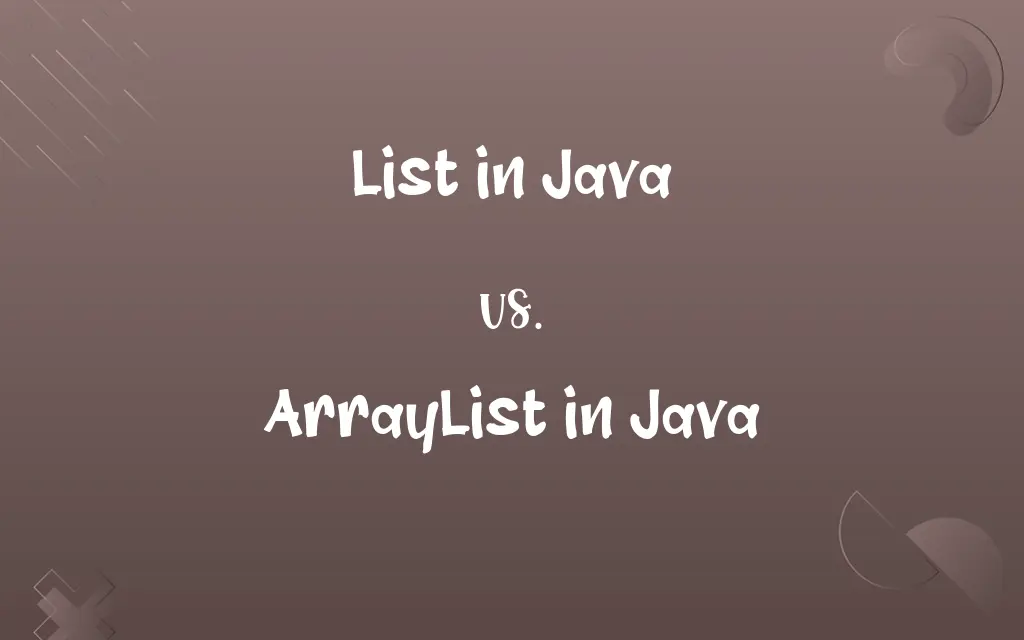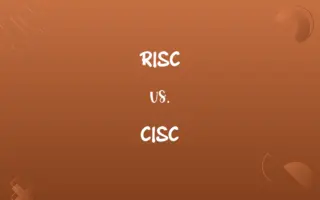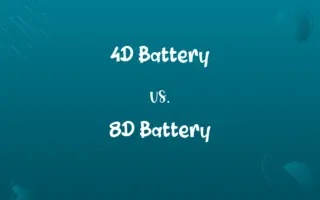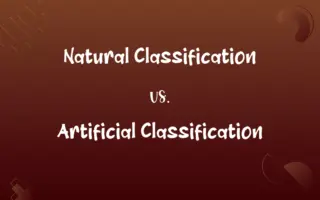List in Java vs. ArrayList in Java: Know the Difference

By Shumaila Saeed & Hifza Nasir || Published on March 5, 2024
List is an interface in Java defining a collection, while ArrayList is a resizable array implementation of the List interface, offering dynamic array features.

Key Differences
List in Java is an interface that represents a sequence of elements, allowing for dynamic manipulation of these elements, such as insertion, deletion, and traversal. It does not specify any implementation, serving as a blueprint for list operations. ArrayList, however, is a concrete implementation of the List interface, utilizing a resizable array to store elements. This allows ArrayLists to grow or shrink dynamically as elements are added or removed, providing a flexible way to manage collections of objects.
Shumaila Saeed
Mar 05, 2024
ArrayList offers direct implementations of List methods, enabling operations like adding, removing, and accessing elements by index. Being an implementation of List, ArrayList inherits its properties but also adds the capability to adjust its size automatically. List, as an interface, can be implemented by various classes, including LinkedList, Vector, and ArrayList, each offering unique characteristics, with ArrayList being the most popular due to its efficiency in random access operations.
Hifza Nasir
Mar 05, 2024
List defines the structure for collections that maintain an ordered sequence of elements. It allows for duplicate elements and provides methods for positional access and search. In contrast, ArrayList, by extending AbstractList and implementing List, provides a concrete way to use these functionalities, emphasizing speed and efficiency for indexed access while sacrificing some performance for operations like insertion and removal in the middle of the list.
Shumaila Saeed
Mar 05, 2024
The choice between using List as a reference type and ArrayList as an object depends on the specific requirements of the application. Using List as a reference type provides the flexibility to switch between different List implementations, while using ArrayList directly leverages its specific functionalities, such as ensuring capacity and minimizing memory overhead.
Shumaila Saeed
Mar 05, 2024
ArrayList's implementation of the List interface means it follows the contract defined by List but optimizes performance for certain operations. For instance, ArrayList offers constant-time access to elements by index, making it an excellent choice for scenarios with frequent read operations, while operations that alter the list's size, like adding or removing elements, might be slower compared to other List implementations like LinkedList.
Hifza Nasir
Mar 05, 2024
ADVERTISEMENT
Comparison Chart
Basic Definition
An ordered collection interface.
A resizable array implementation of the List interface.
Hifza Nasir
Mar 05, 2024
Implementation
Cannot be instantiated; requires a concrete class.
Can be instantiated directly.
Shumaila Saeed
Mar 05, 2024
Storage Mechanism
Abstract, depends on implementation.
Uses a dynamic array.
Shumaila Saeed
Mar 05, 2024
Performance
Varies with specific implementation.
Fast random access, slower insertions and deletions.
Shumaila Saeed
Mar 05, 2024
ADVERTISEMENT
Use Case
Defines behavior for list types.
Efficient for storing and accessing elements.
Shumaila Saeed
Mar 05, 2024
Method of Operation
Abstract methods for manipulation of elements.
Implements List methods, allowing dynamic operations.
Hifza Nasir
Mar 05, 2024
Flexibility
Allows changing implementation without changing code.
Fixed to array-based storage, but flexible in size.
Shumaila Saeed
Mar 05, 2024
Ideal For
General list operations with flexibility.
Situations requiring frequent access and minimal changes.
Dua Fatima
Mar 05, 2024
List in Java and ArrayList in Java Definitions
List in Java
Enables generic collections.
List<Integer> integers = new ArrayList<>().
Hifza Nasir
Feb 26, 2024
ADVERTISEMENT
ArrayList in Java
Efficient for storage and retrieval operations.
ArrayList.ensureCapacity(100).
Shumaila Saeed
Feb 26, 2024
List in Java
Supports duplicate elements and positional access.
List.add(1, element).
Shumaila Saeed
Feb 26, 2024
ArrayList in Java
Provides fast random access to elements.
String item = arrayList.get(0).
Shumaila Saeed
Feb 26, 2024
List in Java
Abstracts the concept of a sequence.
List<Double> doubles = Arrays.asList(1.1, 2.2, 3.3).
Shumaila Saeed
Feb 26, 2024
ArrayList in Java
Can be initialized with a specific capacity.
ArrayList<String> list = new ArrayList<>(50).
Hifza Nasir
Feb 26, 2024
List in Java
An interface for ordered collections in Java.
List<String> strings = new LinkedList<>().
Hifza Nasir
Feb 26, 2024
ArrayList in Java
Allows dynamic expansion and reduction.
ArrayList.add(New Element).
Shumaila Saeed
Feb 26, 2024
List in Java
Can be implemented by various classes.
List<String> list = new Vector<>().
Hifza Nasir
Feb 26, 2024
ArrayList in Java
A resizable array implementation of the List interface.
ArrayList<Integer> numbers = new ArrayList<>().
Hifza Nasir
Feb 26, 2024
Repeatedly Asked Queries
How does ArrayList manage its capacity?
ArrayList automatically resizes itself by creating a larger array and copying the elements to it when more space is needed.
Shumaila Saeed
Mar 05, 2024
Why choose ArrayList over other List implementations?
ArrayList is often chosen for its efficient random access capabilities and dynamic resizing features, making it suitable for scenarios with frequent read operations and less frequent modifications.
Hifza Nasir
Mar 05, 2024
What is ArrayList in Java?
ArrayList is a resizable array implementation of the List interface, offering dynamic array features for efficient storage and access.
Shumaila Saeed
Mar 05, 2024
Can I use List to instantiate an object?
No, List is an interface and cannot be instantiated directly; it requires a concrete class like ArrayList or LinkedList for object creation.
Shumaila Saeed
Mar 05, 2024
What happens if I try to access an element out of bounds in an ArrayList?
An IndexOutOfBoundsException is thrown if you try to access an element out of the ArrayList's current bounds.
Hifza Nasir
Mar 05, 2024
Is it better to use List or ArrayList as a reference type?
Using List as a reference type provides the flexibility to change the concrete implementation without changing the rest of the code, while using ArrayList directly leverages its specific methods and capabilities.
Hifza Nasir
Mar 05, 2024
Can ArrayList hold primitive types?
No, ArrayList cannot hold primitive types directly; it holds objects. Primitive types must be used through their wrapper classes, like Integer for int.
Shumaila Saeed
Mar 05, 2024
What is List in Java?
List is an interface in Java that represents an ordered collection of objects, allowing for dynamic manipulation of these objects.
Hifza Nasir
Mar 05, 2024
How do I choose between LinkedList and ArrayList?
Choose LinkedList for frequent insertions and deletions within the list, and ArrayList for frequent access operations due to its efficient indexing.
Shumaila Saeed
Mar 05, 2024
How do I convert an ArrayList to an array?
Use the toArray() method provided by ArrayList to convert it into an array.
Dua Fatima
Mar 05, 2024
How do you iterate over an ArrayList?
You can iterate over an ArrayList using a for-loop, enhanced for-loop, iterator, or forEach method.
Dua Fatima
Mar 05, 2024
What method is used to remove an element from an ArrayList?
Use the remove() method, specifying either the index of the element to be removed or the element itself.
Hifza Nasir
Mar 05, 2024
Can ArrayList contain duplicate elements?
Yes, ArrayList can contain duplicate elements, as it follows the List interface contract which allows duplicates.
Shumaila Saeed
Mar 05, 2024
Is ArrayList synchronized?
No, ArrayList is not synchronized. For thread-safe operations, consider using Vector or Collections.synchronizedList.
Shumaila Saeed
Mar 05, 2024
Can I create an ArrayList of a specific initial capacity?
Yes, the ArrayList constructor allows you to specify an initial capacity.
Shumaila Saeed
Mar 05, 2024
Share this page
Link for your blog / website
HTML
Link to share via messenger
About Author
Written by
Shumaila SaeedShumaila Saeed, an expert content creator with 6 years of experience, specializes in distilling complex topics into easily digestible comparisons, shining a light on the nuances that both inform and educate readers with clarity and accuracy.
Co-written by
Hifza Nasir






































































